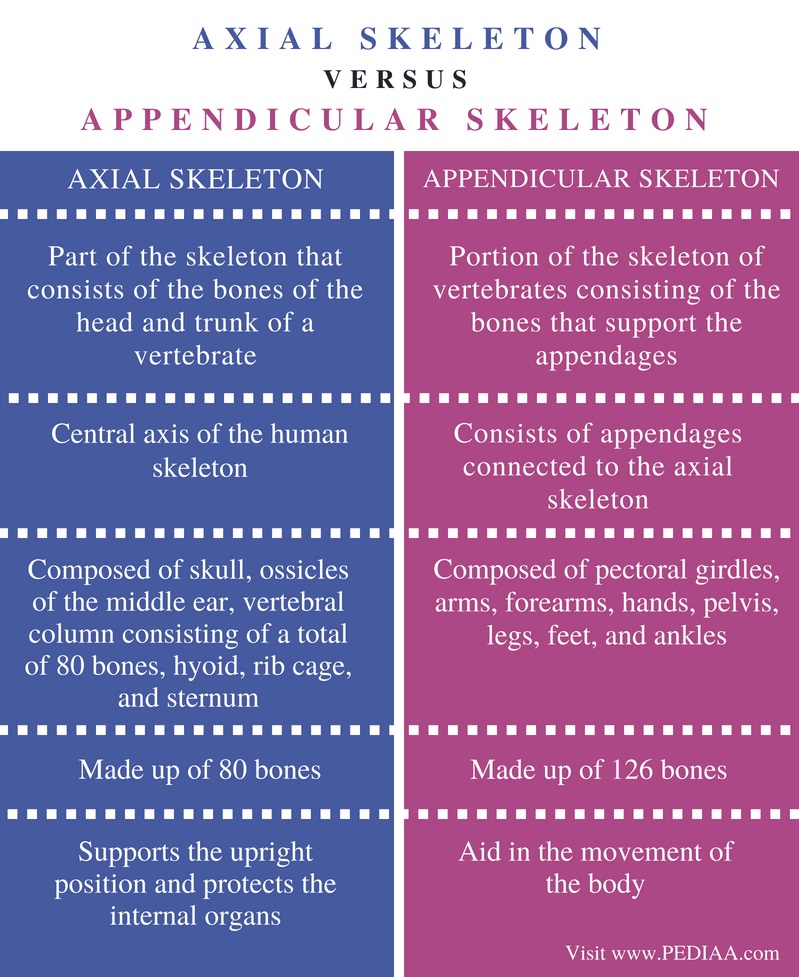Skeletal System Axial and Appendicular Skeletons POWER POINT Biology Diagrams The appendicular skeleton, being more flexible and dynamic, allows for a greater range of motion think about how we swing our arms or do squats! 5. Types of Bones: The axial skeleton mainly consists of flat and irregular bones (like those in the skull), while the appendicular skeleton includes long and short bones (like the femur and carpals).
Learn about the axial skeleton, which consists of the bones of the head and trunk, and the appendicular skeleton, which consists of the bones of the limbs. The web page covers the anatomy, functions, and clinical aspects of both skeletons. The human skeleton is divided into two main parts: the axial skeleton and the appendicular skeleton.- Axial Skeleton: This includes the bones that form the long axis of the body. Think of it as the central support beam of your house. It comprises the skull, vertebral column (your spine), and rib cage. - Appendicular Skeleton: In contrast Learn the functions and structures of the skeletal system, which includes 206 bones in the adult. The axial skeleton forms the vertical axis of the body and consists of 80 bones, while the appendicular skeleton includes 126 bones of the limbs and girdles.
6: Axial and Appendicular Skeleton Biology Diagrams
Learn about the structure and function of the axial and appendicular skeleton in vertebrates, the two types of endoskeleton composed of cartilage and bone. Compare the skeletal features of amphibians and mammals, and see examples of frog and rabbit skeletons.

The axial skeleton includes the bones that form the skull, laryngeal skeleton, vertebral column, and thoracic cage. The bones of the appendicular skeleton (the limbs and girdles) "append" to the axial skeleton. 1. Skull Bones Protect the Brain and Form an Entrance to the Body. The skull consists of the cranial bones and the facial skeleton Learn the difference between the axial and appendicular skeleton, the two parts of the human skeleton. The axial skeleton is the central core of the body, while the appendicular skeleton forms the arms and legs. Learn the difference between the axial and appendicular skeleton, and the bones that make up each part. The axial skeleton contains 80 bones in the head, vertebral column, and thorax, while the appendicular skeleton has 126 bones in the upper and lower limbs.

Axial and Appendicular Skeleton Biology Diagrams
The main difference between axial and appendicular skeleton is that the axial skeleton makes up the central axis of the body whereas the appendicular skeleton connects the appendages to the axial skeleton. Furthermore, the axial skeleton consists of six parts: the skull, the ossicles of the middle ear, the vertebral column, hyoid, rib cage, and the sternum while the appendicular skeleton
